- Home
- H. P. Lovecraft
At the mountains of madness Page 3
At the mountains of madness Read online
Page 3
CHINA MIéVILLE was born in 1972, and lives and works in London. His novels, which include Perdido Street Station and Iron Council, have won the Arthur C. Clarke and British Fantasy awards. His nonfiction includes Between Equal Rights, a study of international law.
NOTES
1. S. T. Joshi, A Dreamer and a Visionary: H. P. Lovecraft in His Time (Liverpool University Press, 2001), p. 300.
2. From “Notes on Writing Weird Fiction.”
3. Letter to Fransworth Wright, July 5, 1927.
4. José Monleón, A Specter Is Haunting Europe: A Sociohistorical Approach to the Fantastic (Princeton University Press, 1990).
5. John Long, Mountains of Madness: A Scientist’s Odyssey in Antarctica (Joseph Henry Press, 2001).
6. Victoria Nelson, The Secret Life of Puppets (Harvard University Press, 2001), p. 152.
7. Joshi, p. 360.
8. Joshi, p. 55.
9. Joshi, p. 222.
10. Leon Trotsky, “Céline and Poincaré: Novelist and Politician,” 1933.
11. Michel Houellebecq, H. P. Lovecraft: Against the World, Against Life (with thanks to Robin Mackay for the translation).
12. Joshi, p. 346.
13. Letter to Clark Ashton Smith, September 30, 1934.
14. Ibid.
15. From “Some Repetitions on the Times,” 1933.
16. Ibid.
17. Letter to Clark Ashton Smith, October 28, 1934.
18. Ibid.
19. Ibid.
20. Letter to Frank Belknap Long, May 21, 1924.
AT THE
MOUNTAINS OF
MADNESS
I
I am forced into speech because men of science have refused to follow my advice without knowing why. It is altogether against my will that I tell my reasons for opposing this contemplated invasion of the antarctic—with its vast fossil-hunt and its wholesale boring and melting of the ancient ice-cap—and I am the more reluctant because my warning may be in vain. Doubt of the real facts, as I must reveal them, is inevitable; yet if I suppressed what will seem extravagant and incredible there would be nothing left. The hitherto withheld photographs, both ordinary and aërial, will count in my favour; for they are damnably vivid and graphic. Still, they will be doubted because of the great lengths to which clever fakery can be carried. The ink drawings, of course, will be jeered at as obvious impostures; notwithstanding a strangeness of technique which art experts ought to remark and puzzle over.
In the end I must rely on the judgment and standing of the few scientific leaders who have, on the one hand, sufficient independence of thought to weigh my data on its own hideously convincing merits or in the light of certain primordial and highly baffling myth-cycles; and on the other hand, sufficient influence to deter the exploring world in general from any rash and overambitious programme in the region of those mountains of madness. It is an unfortunate fact that relatively obscure men like myself and my associates, connected only with a small university, have little chance of making an impression where matters of a wildly bizarre or highly controversial nature are concerned.
It is further against us that we are not, in the strictest sense, specialists in the fields which came primarily to be concerned. As a geologist my object in leading the Miskatonic University Expedition was wholly that of securing deep-level specimens of rock and soil from various parts of the antarctic continent, aided by the remarkable drill devised by Prof. Frank H. Pabodie of our engineering department. I had no wish to be a pioneer in any other field than this; but I did hope that the use of this new mechanical appliance at different points along previously explored paths would bring to light materials of a sort hitherto unreached by the ordinary methods of collection. Pabodie’s drilling apparatus, as the public already knows from our reports, was unique and radical in its lightness, portability, and capacity to combine the ordinary artesian drill principle with the principle of the small circular rock drill in such a way as to cope quickly with strata of varying hardness. Steel head, jointed rods, gasoline motor, collapsible wooden derrick, dynamiting paraphernalia, cording, rubbish-removal auger, and sectional piping for bores five inches wide and up to 1,000 feet deep all formed, with needed accessories, no greater load than three seven-dog sledges could carry; this being made possible by the clever aluminum alloy of which most of the metal objects were fashioned. Four large Dornier aëroplanes, designed especially for the tremendous altitude flying necessary on the antarctic plateau and with added fuel-warming and quick-starting devices worked out by Pabodie, could transport our entire expedition from a base at the edge of the great ice barrier to various suitable inland points, and from these points a sufficient quota of dogs would serve us.
We planned to cover as great an area as one antarctic season—or longer, if absolutely necessary—would permit, operating mostly in the mountain-ranges and on the plateau south of Ross Sea; regions explored in varying degree by Shackleton, Amundsen, Scott, and Byrd. With frequent changes of camp, made by aëroplane and involving distances great enough to be of geological significance, we expected to unearth a quite unprecedented amount of material; especially in the pre-Cambrian strata of which so narrow a range of antarctic specimens had previously been secured. We wished also to obtain as great as possible a variety of the upper fossiliferous rocks, since the primal life-history of this bleak realm of ice and death is of the highest importance to our knowledge of the earth’s past. That the antarctic continent was once temperate and even tropical, with a teeming vegetable and animal life of which the lichens, marine fauna, arachnida, and penguins of the northern edge are the only survivals, is a matter of common information; and we hoped to expand that information in variety, accuracy, and detail. When a simple boring revealed fossiliferous signs, we would enlarge the aperture by blasting in order to get specimens of suitable size and condition.
Our borings, of varying depth according to the promise held out by the upper soil or rock, were to be confined to exposed or nearly exposed land surfaces—these inevitably being slopes and ridges because of the mile or two-mile thickness of solid ice overlying the lower levels. We could not afford to waste drilling depth on any considerable amount of mere glaciation, though Pabodie had worked out a plan for sinking copper electrodes in thick clusters of borings and melting off limited areas of ice with current from a gasoline-driven dynamo. It is this plan—which we could not put into effect except experimentally on an expedition such as ours—that the coming Starkweather-Moore Expedition proposes to follow despite the warnings I have issued since our return from the antarctic.
The public knows of the Miskatonic Expedition through our frequent wireless reports to the Arkham Advertiser and Associated Press, and through the later articles of Pabodie and myself. We consisted of four men from the University—Pabodie, Lake of the biology department, Atwood of the physics department (also a meteorologist), and I representing geology and having nominal command—besides sixteen assistants; seven graduate students from Miskatonic and nine skilled mechanics. Of these sixteen, twelve were qualified aëroplane pilots, all but two of whom were competent wireless operators. Eight of them understood navigation with compass and sextant, as did Pabodie, Atwood, and I. In addition, of course, our two ships—wooden ex-whalers, reinforced for ice conditions and having auxiliary steam—were fully manned. The Nathaniel Derby Pickman Foundation, aided by a few special contributions, financed the expedition; hence our preparations were extremely thorough despite the absence of great publicity. The dogs, sledges, machines, camp materials, and unassembled parts of our five planes were delivered in Boston, and there our ships were loaded. We were marvellously well-equipped for our specific purposes, and in all matters pertaining to supplies, regimen, transportation, and camp construction we profited by the excellent example of our many recent and exceptionally brilliant predecessors. It was the unusual number and fame of these predecessors which made our own expedition—ample though it was—so little noticed by the world at large.
As the newspap
ers told, we sailed from Boston Harbour on September 2, 1930; taking a leisurely course down the coast and through the Panama Canal, and stopping at Samoa and Hobart, Tasmania, at which latter place we took on final supplies. None of our exploring party had ever been in the polar regions before, hence we all relied greatly on our ship captains—J. B. Douglas, commanding the brig Arkham, and serving as commander of the sea party, and Georg Thorfinnssen, commanding the barque Miskatonic—both veteran whalers in antarctic waters. As we left the inhabited world behind the sun sank lower and lower in the north, and stayed longer and longer above the horizon each day. At about 62° South Latitude we sighted our first icebergs—table-like objects with vertical sides—and just before reaching the Antarctic Circle, which we crossed on October 20 with appropriately quaint ceremonies, we were considerably troubled with field ice. The falling temperature bothered me considerably after our long voyage through the tropics, but I tried to brace up for the worse rigours to come. On many occasions the curious atmospheric effects enchanted me vastly; these including a strikingly vivid mirage—the first I had ever seen—in which distant bergs became the battlements of unimaginable cosmic castles.
Pushing through the ice, which was fortunately neither extensive nor thickly packed, we regained open water at South Latitude 67°, East Longitude 175°. On the morning of October 26 a strong “land blink” appeared on the south, and before noon we all felt a thrill of excitement at beholding a vast, lofty, and snow-clad mountain chain which opened out and covered the whole vista ahead. At last we had encountered an outpost of the great unknown continent and its cryptic world of frozen death. These peaks were obviously the Admiralty Range discovered by Ross, and it would now be our task to round Cape Adare and sail down the east coast of Victoria Land to our contemplated base on the shore of McMurdo Sound at the foot of the volcano Erebus in South Latitude 77° 9'.
The last lap of the voyage was vivid and fancy-stirring, great barren peaks of mystery looming up constantly against the west as the low northern sun of noon or the still lower horizon-grazing southern sun of midnight poured its hazy reddish rays over the white snow, bluish ice and water lanes, and black bits of exposed granite slope. Through the desolate summits swept raging intermittent gusts of the terrible antarctic wind; whose cadences sometimes held vague suggestions of a wild and half-sentient musical piping, with notes extending over a wide range, and which for some subconscious mnemonic reason seemed to me disquieting and even dimly terrible. Something about the scene reminded me of the strange and disturbing Asian paintings of Nicholas Roerich, and of the still stranger and more disturbing descriptions of the evilly fabled plateau of Leng which occur in the dreaded Necronomicon of the mad Arab Abdul Alhazred. I was rather sorry, later on, that I had ever looked into that monstrous book at the college library.
On the seventh of November, sight of the westward range having been temporarily lost, we passed Franklin Island; and the next day descried the cones of Mts. Erebus and Terror on Ross Island ahead, with the long line of the Parry Mountains beyond. There now stretched off to the east the low, white line of the great ice barrier; rising perpendicularly to a height of 200 feet like the rocky cliffs of Quebec, and marking the end of southward navigation. In the afternoon we entered McMurdo Sound and stood off the coast in the lee of smoking Mt. Erebus. The scoriac peak towered up some 12,700 feet against the eastern sky, like a Japanese print of the sacred Fujiyama; while beyond it rose the white, ghost-like height of Mt. Terror, 10,900 feet in altitude, and now extinct as a volcano. Puffs of smoke from Erebus came intermittently, and one of the graduate assistants—a brilliant young fellow named Danforth—pointed out what looked like lava on the snowy slope; remarking that this mountain, discovered in 1840, had undoubtedly been the source of Poe’s image when he wrote seven years later of
“—the lavas that restlessly roll
Their sulphurous currents down Yaanek
In the ultimate climes of the pole—
That groan as they roll down Mount Yaanek
In the realms of the boreal pole.”
Danforth was a great reader of bizarre material, and had talked a good deal of Poe. I was interested myself because of the antarctic scene of Poe’s only long story—the disturbing and enigmatical Arthur Gordon Pym. On the barren shore, and on the lofty ice barrier in the background, myriads of grotesque penguins squawked and flapped their fins; while many fat seals were visible on the water, swimming or sprawling across large cakes of slowly drifting ice.
Using small boats, we effected a difficult landing on Ross Island shortly after midnight on the morning of the 9th, carrying a line of cable from each of the ships and preparing to unload supplies by means of a breeches-buoy arrangement. Our sensations on first treading antarctic soil were poignant and complex, even though at this particular point the Scott and Shackleton expeditions had preceded us. Our camp on the frozen shore below the volcano’s slope was only a provisional one; headquarters being kept aboard the Arkham. We landed all our drilling apparatus, dogs, sledges, tents, provisions, gasoline tanks, experimental ice-melting outfit, cameras both ordinary and aërial, aëroplane parts, and other accessories, including three small portable wireless outfits (besides those in the planes) capable of communicating with the Arkham’s large outfit from any part of the antarctic continent that we would be likely to visit. The ship’s outfit, communicating with the outside world, was to convey press reports to the Arkham Advertiser’s powerful wireless station on Kingsport Head, Mass. We hoped to complete our work during a single antarctic summer; but if this proved impossible we would winter on the Arkham, sending the Miskatonic north before the freezing of the ice for another summer’s supplies.
I need not repeat what the newspapers have already published about our early work: of our ascent of Mt. Erebus; our successful mineral borings at several points on Ross Island and the singular speed with which Pabodie’s apparatus accomplished them, even through solid rock layers; our provisional test of the small ice-melting equipment; our perilous ascent of the great barrier with sledges and supplies; and our final assembling of five huge aëroplanes at the camp atop the barrier. The health of our land party—twenty men and 55 Alaskan sledge dogs—was remarkable, though of course we had so far encountered no really destructive temperatures or windstorms. For the most part, the thermometer varied between zero and 20° or 25° above, and our experience with New England winters had accustomed us to rigours of this sort. The barrier camp was semi-permanent, and destined to be a storage cache for gasoline, provisions, dynamite, and other supplies. Only four of our planes were needed to carry the actual exploring material, the fifth being left with a pilot and two men from the ships at the storage cache to form a means of reaching us from the Arkham in case all our exploring planes were lost. Later, when not using all the other planes for moving apparatus, we would employ one or two in a shuttle transportation service between this cache and another permanent base on the great plateau from 600 to 700 miles southward, beyond Beardmore Glacier. Despite the almost unanimous accounts of appalling winds and tempests that pour down from the plateau, we determined to dispense with intermediate bases; taking our chances in the interest of economy and probable efficiency.
Wireless reports have spoken of the breath-taking four-hour nonstop flight of our squadron on November 21 over the lofty shelf ice, with vast peaks rising on the west, and the unfathomed silences echoing to the sound of our engines. Wind troubled us only moderately, and our radio compasses helped us through the one opaque fog we encountered. When the vast rise loomed ahead, between Latitudes 83° and 84°, we knew we had reached Beardmore Glacier, the largest valley glacier in the world, and that the frozen sea was now giving place to a frowning and mountainous coast-line. At last we were truly entering the white, aeon-dead world of the ultimate south, and even as we realised it we saw the peak of Mt. Nansen in the eastern distance, towering up to its height of almost 15,000 feet.
The successful establishment of the southern base above the glacier
in Latitude 86° 7', East Longitude 174° 23', and the phenomenally rapid and effective borings and blastings made at various points reached by our sledge trips and short aëroplane flights, are matters of history; as is the arduous and triumphant ascent of Mt. Nansen by Pabodie and two of the graduate students—Gedney and Carroll—on December 13–15. We were some 8,500 feet above sea-level, and when experimental drillings revealed solid ground only twelve feet down through the snow and ice at certain points, we made considerable use of the small melting apparatus and sunk bores and performed dynamiting at many places where no previous explorer had ever thought of securing mineral specimens. The pre-Cambrian granites and beacon sandstones thus obtained confirmed our belief that this plateau was homogeneous with the great bulk of the continent to the west, but somewhat different from the parts lying eastward below South America—which we then thought to form a separate and smaller continent divided from the larger one by a frozen junction of Ross and Weddell Seas, though Byrd has since disproved the hypothesis.
In certain of the sandstones, dynamited and chiselled after boring revealed their nature, we found some highly interesting fossil markings and fragments—notably ferns, seaweeds, trilobites, crinoids, and such molluscs as lingulellae and gasteropods—all of which seemed of real significance in connexion with the region’s primordial history. There was also a queer triangular, striated marking about a foot in greatest diameter which Lake pieced together from three fragments of slate brought up from a deep-blasted aperture. These fragments came from a point to the westward, near the Queen Alexandra Range; and Lake, as a biologist, seemed to find their curious marking unusually puzzling and provocative, though to my geological eye it looked not unlike some of the ripple effects reasonably common in the sedimentary rocks. Since slate is no more than a metamorphic formation into which a sedimentary stratum is pressed, and since the pressure itself produces odd distorting effects on any markings which may exist, I saw no reason for extreme wonder over the striated depression.

 The Best of H.P. Lovecraft
The Best of H.P. Lovecraft The Definitive H.P. Lovecraft: 67 Tales Of Horror In One Volume
The Definitive H.P. Lovecraft: 67 Tales Of Horror In One Volume The Complete Works of H.P. Lovecraft
The Complete Works of H.P. Lovecraft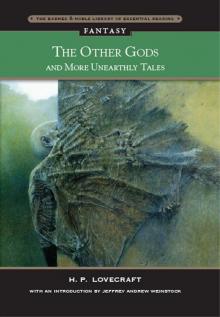 Other Gods and More Unearthly Tales
Other Gods and More Unearthly Tales Lovecraft's Fiction Volume I, 1905-1925
Lovecraft's Fiction Volume I, 1905-1925 The Shadow Out of Time
The Shadow Out of Time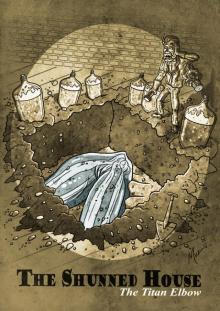 The Shunned House
The Shunned House Lovecraft's Fiction Volume II, 1926-1928
Lovecraft's Fiction Volume II, 1926-1928 The Thing on the Doorstep and Other Weird Stories
The Thing on the Doorstep and Other Weird Stories Dream Cycle of H. P. Lovecraft: Dreams of Terror and Death
Dream Cycle of H. P. Lovecraft: Dreams of Terror and Death Great Tales of Horror
Great Tales of Horror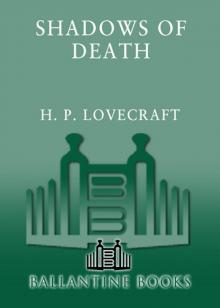 Shadows of Death
Shadows of Death Delphi Complete Works of H. P. Lovecraft (Illustrated)
Delphi Complete Works of H. P. Lovecraft (Illustrated) Waking Up Screaming: Haunting Tales of Terror
Waking Up Screaming: Haunting Tales of Terror H.P. Lovecraft Goes to the Movies
H.P. Lovecraft Goes to the Movies The Road to Madness
The Road to Madness The Complete H.P. Lovecraft Reader (68 Stories)
The Complete H.P. Lovecraft Reader (68 Stories) The Horror in the Museum
The Horror in the Museum Collected Fiction Volume 1 (1905-1925): A Variorum Edition
Collected Fiction Volume 1 (1905-1925): A Variorum Edition Lovecrafts_Fiction, vol.I_1905-1925
Lovecrafts_Fiction, vol.I_1905-1925 Writings in the United Amateur, 1915-1922
Writings in the United Amateur, 1915-1922 H.P. Lovecraft: The Complete Works
H.P. Lovecraft: The Complete Works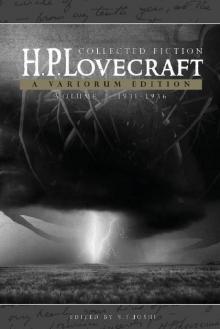 Collected Fiction Volume 3 (1931-1936): A Variorum Edition
Collected Fiction Volume 3 (1931-1936): A Variorum Edition H.P. Lovecraft: The Complete Fiction
H.P. Lovecraft: The Complete Fiction Collected Fiction Volume 2 (1926-1930): A Variorum Edition
Collected Fiction Volume 2 (1926-1930): A Variorum Edition Yog Sothothery - The Definitive H.P. Lovecraft Anthology
Yog Sothothery - The Definitive H.P. Lovecraft Anthology The Complete H.P. Lovecraft Collection (Xist Classics)
The Complete H.P. Lovecraft Collection (Xist Classics)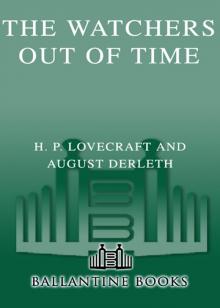 The Watchers Out of Time
The Watchers Out of Time Eldritch Tales
Eldritch Tales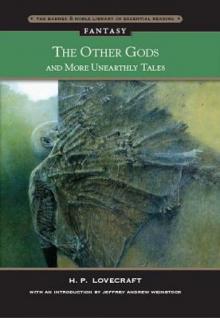 The Other Gods And More Unearthly Tales
The Other Gods And More Unearthly Tales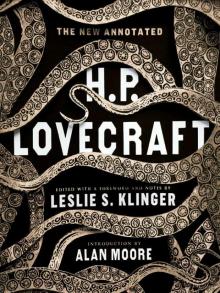 The New Annotated H. P. Lovecraft
The New Annotated H. P. Lovecraft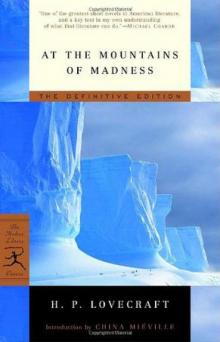 At the mountains of madness
At the mountains of madness Bloodcurdling Tales of Horror and the Macabre
Bloodcurdling Tales of Horror and the Macabre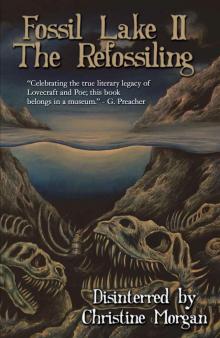 Fossil Lake II: The Refossiling
Fossil Lake II: The Refossiling Shadows of Carcosa: Tales of Cosmic Horror by Lovecraft, Chambers, Machen, Poe, and Other Masters of the Weird
Shadows of Carcosa: Tales of Cosmic Horror by Lovecraft, Chambers, Machen, Poe, and Other Masters of the Weird H. P. Lovecraft
H. P. Lovecraft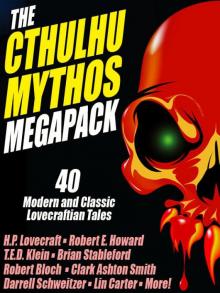 The Cthulhu Mythos Megapack
The Cthulhu Mythos Megapack The Complete H. P. Lovecraft Reader (2nd Edition)
The Complete H. P. Lovecraft Reader (2nd Edition) The Complete Fiction
The Complete Fiction Waking Up Screaming
Waking Up Screaming Transition of H. P. Lovecraft
Transition of H. P. Lovecraft![[1935] The Shadow Out of Time Read online](http://i1.bookreadfree.com/i2/04/12/1935_the_shadow_out_of_time_preview.jpg) [1935] The Shadow Out of Time
[1935] The Shadow Out of Time The Horror Megapack
The Horror Megapack